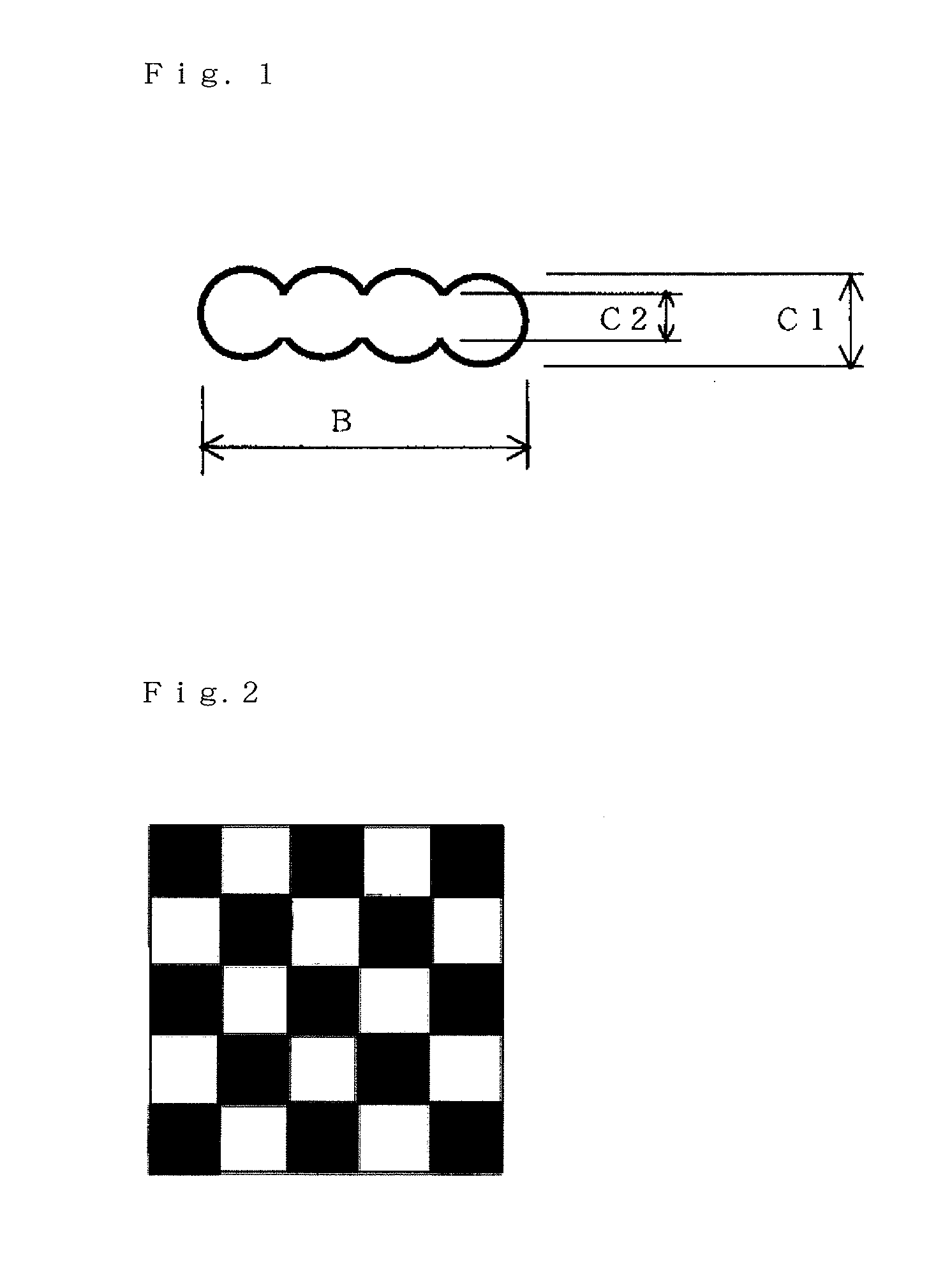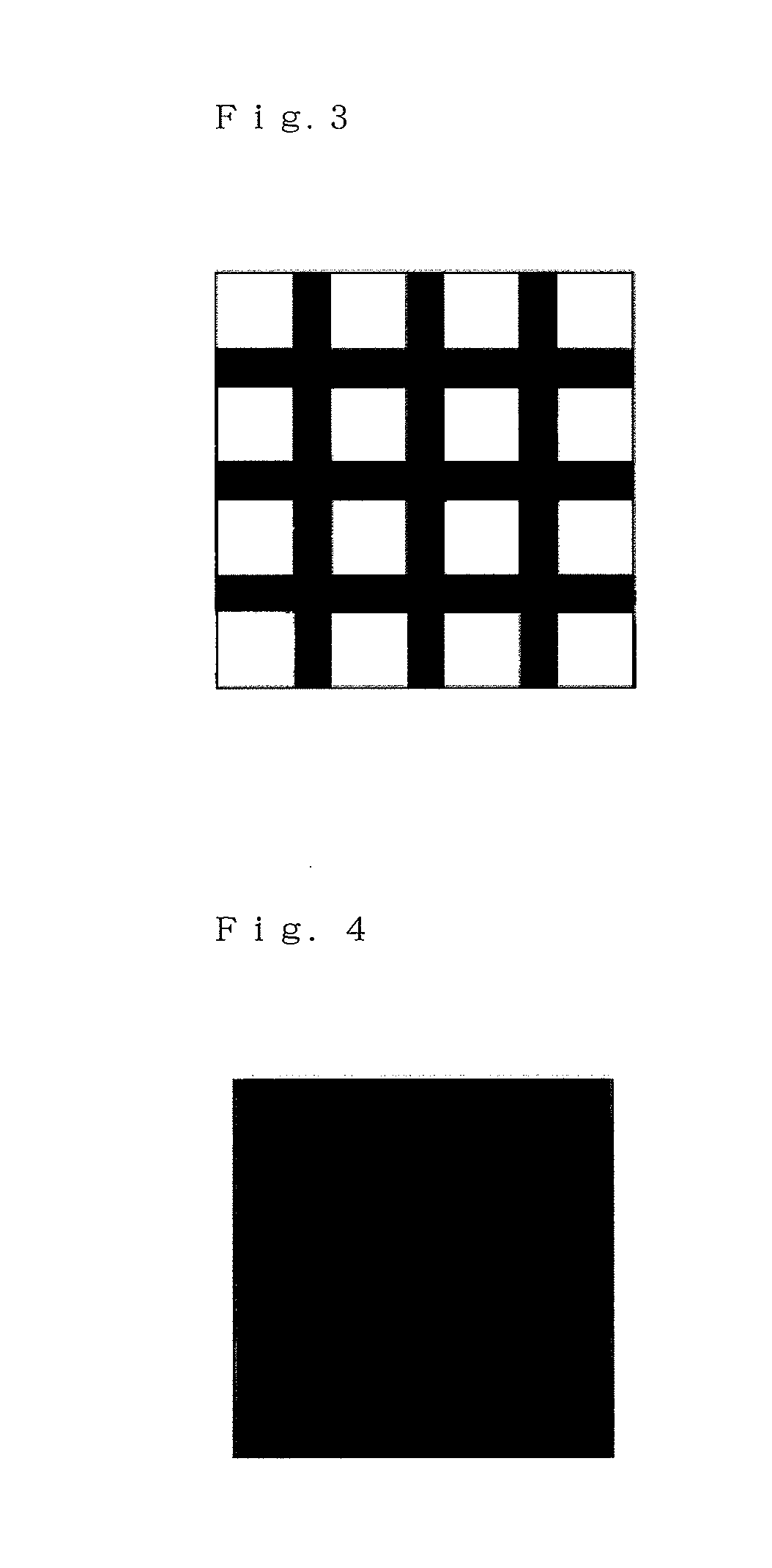Fiber and fiber structure
a technology of fiber and structure, applied in the field of fiber and fiber structure, can solve problems such as deterioration of working environment, and achieve the effect of suppressing the generation of offensive odor originating from a free isocyanate compound and improving the working environmen
- Summary
- Abstract
- Description
- Claims
- Application Information
AI Technical Summary
Benefits of technology
Problems solved by technology
Method used
Image
Examples
reference example 1
[0391]Tin octylate was added in an amount of 0.005 wt % based on 100 wt % of L-lactide (manufactured by Musashino Chemical Laboratory, optical purity: 100%), and the mixture was allowed to react in a nitrogen atmosphere in a reactor equipped with a stirring blade at 180° C. for 2 hours. As a catalyst deactivator, phosphoric acid was added thereto in an amount of 1.2 equivalents of tin octylate, then the residual lactide was removed at 13.3 Pa, and the resulting product was formed into chips. Poly(L-lactic acid) was thus obtained.
[0392]The obtained poly(L-lactic acid) had a weight-average molecular weight of 152,000, a glass transition temperature (Tg) of 55° C., and a melting point of 175° C. The carboxyl group concentration was 14 eq / ton, and the retention of reduced viscosity in hydrolysis was 9.5%.
reference example 2
[0393]Polymerization was performed under the same conditions as in Reference Example 1, except that L-lactide was replaced with D-lactide (manufactured by Musashino Chemical Laboratory, optical purity: 100%). Poly(D-lactic acid) was thus obtained. The obtained poly(D-lactic acid) had a weight-average molecular weight of 151,000, a glass transition temperature (Tg) of 55° C., and a melting point of 175° C. The carboxyl group concentration was 15 eq / ton, and the retention of reduced viscosity in hydrolysis was 9.1%. The obtained poly(D-lactic acid) and the poly(L-lactic acid) obtained by the procedure of Reference Example 1 each in an amount of 50 wt % were mixed with a phosphoric acid ester metal salt (“ADK STAB” NA-11 manufactured by ADEKA) in an amount of 0.3 wt % in a blender, and vacuum-dried at 110° C. for 5 hours. After that, the mixture was melt-kneaded while evacuating at a cylinder temperature of 230° C. and a vent pressure of 13.3 Pa, then extruded into strands in a water b...
reference example 3
[0395]o-Nitrophenol (0.11 mol), 1,2-dibromoethane (0.05 mol), potassium carbonate (0.33 mol), and 200 ml of N,N-dimethylformamide (DMF) were charged to a reactor equipped with a stirrer and a heater in a N2 atmosphere, and allowed to react at 130° C. for 12 hours. DMF was then removed by reducing the pressure, and the resulting solid matter was dissolved in 200 ml of dichloromethane, followed by separation three times with 100 ml of water. The organic layer was dried over 5 g of sodium sulfate, and dichloromethane was removed by reducing the pressure. An intermediate product A (nitro compound) was thus obtained.
[0396]Next, the intermediate product A (0.1 mol), 5% palladium carbon (Pd / C) (1 g), and 200 ml of ethanol / dichloromethane (70 / 30) were charged to a reactor equipped with a stirrer, and the atmosphere was replaced with hydrogen five times. The mixture was allowed to react at 25° C. under a constant supply of hydrogen. The reaction is terminated when hydrogen stops decreasing. ...
PUM
| Property | Measurement | Unit |
|---|---|---|
| Structure | aaaaa | aaaaa |
| Aliphatic | aaaaa | aaaaa |
Abstract
Description
Claims
Application Information
 Login to View More
Login to View More - R&D
- Intellectual Property
- Life Sciences
- Materials
- Tech Scout
- Unparalleled Data Quality
- Higher Quality Content
- 60% Fewer Hallucinations
Browse by: Latest US Patents, China's latest patents, Technical Efficacy Thesaurus, Application Domain, Technology Topic, Popular Technical Reports.
© 2025 PatSnap. All rights reserved.Legal|Privacy policy|Modern Slavery Act Transparency Statement|Sitemap|About US| Contact US: help@patsnap.com



